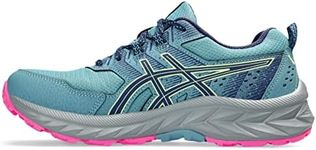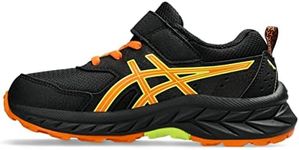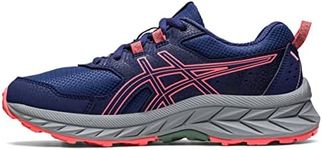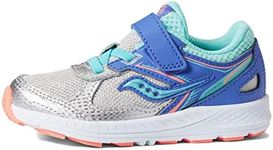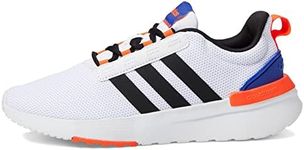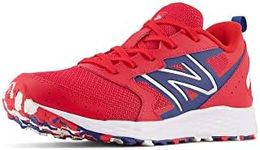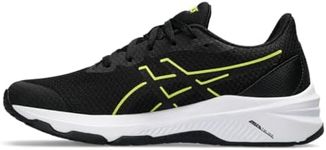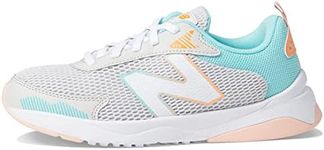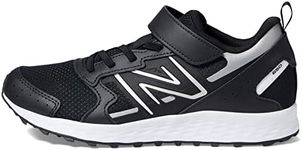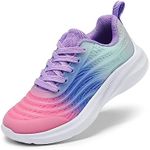Buying Guide for the Best Running Shoes For Kids
Choosing the right running shoes for kids is important to ensure comfort, support, and safety during their activities. Kids' feet are still growing and developing, so the right pair of shoes can help prevent injuries and encourage a love for running or sports. When shopping, focus on how the shoes fit, the type of support they offer, and how well they match your child's activity level and foot shape. Always have your child try on shoes with the socks they plan to wear, and check for enough room at the toes and a secure fit at the heel.Fit and SizingFit and sizing refer to how well the shoe matches the length and width of your child's foot. This is crucial because shoes that are too tight can cause blisters and discomfort, while shoes that are too loose can lead to instability and tripping. Shoe sizes can vary between brands, so always have your child try on both shoes and walk or run a bit in them. Look for about a thumb's width of space between the longest toe and the end of the shoe. If your child has wide or narrow feet, look for brands that offer different width options. The right fit should feel snug but not tight, with no pinching or slipping.
CushioningCushioning is the amount of padding in the sole of the shoe, especially under the heel and forefoot. This helps absorb impact and makes running more comfortable. Shoes with more cushioning are good for kids who run on hard surfaces or need extra comfort, while lighter cushioning can be better for short runs or more natural movement. If your child is very active or runs long distances, look for shoes with moderate to high cushioning. For casual play or short runs, less cushioning may be fine. Always consider your child's comfort and the type of activities they do most.
Support and StabilitySupport and stability refer to how well the shoe helps keep the foot in a natural position and prevents it from rolling too much inward or outward. This is important for kids who have flat feet, high arches, or tend to roll their ankles. Shoes with more support often have firmer materials on the sides or a structured heel. If your child has a history of foot pain or you notice their feet rolling in or out, look for shoes labeled as supportive or stable. For kids with neutral feet and no issues, a standard running shoe is usually enough.
BreathabilityBreathability is how well the shoe allows air to flow in and out, keeping feet cool and dry. Shoes with mesh or lightweight fabric uppers are more breathable and help prevent sweaty, uncomfortable feet, especially in warm weather or during intense activity. If your child tends to get hot or sweaty feet, or if they run in warm climates, prioritize shoes with good breathability. For cooler weather, a slightly less breathable but more insulated shoe may be better.
TractionTraction is the grip the shoe provides on different surfaces. The sole pattern and material affect how well the shoe grips the ground, which is important for safety, especially if your child runs on trails, grass, or wet surfaces. Shoes with deeper treads or rubber soles offer better traction for outdoor or uneven surfaces, while smoother soles are fine for indoor or track use. Think about where your child will be running most often and choose a shoe with the right level of grip for those conditions.
WeightWeight refers to how heavy or light the shoe feels. Lighter shoes are easier for kids to move in and can help them run faster, but sometimes lighter shoes have less cushioning or support. Heavier shoes may offer more protection and durability but can feel bulky. For most kids, a lightweight shoe that still offers enough support and cushioning is ideal, especially for running or sports. If your child is very active or competitive, prioritize lighter shoes, but always balance this with the need for comfort and protection.
DurabilityDurability is how well the shoe holds up to regular use, especially for active kids who may be tough on their footwear. Look for shoes with reinforced toes, sturdy stitching, and quality materials. If your child uses their running shoes for everyday play as well as running, durability becomes even more important. Check for signs of wear in the store and read reviews if possible. The right shoe should last until your child outgrows it, not fall apart after a few months.
